The Engineering in Medicine and Biology Society
By Bruce Wheeler
The IEEE Engineering in Medicine and Biology Society (EMBS) is the oldest, largest and most global biomedical engineering society, with over 9000 members and 200 chapters world wide. It sponsors or co-sponsors 12 academic journals, with its flagship Transactions on Biomedical Engineering being the most cited overall of general biomedical engineering journals.
The EMBS continues to innovate, having added multiple special topic conferences, ranging from neural engineering to health informatics to point-of-care technologies, a strong set of seven summer schools for advanced students, and a growing set of student run conferences world wide. EMBS journals produce three-quarters of all IEEE bioengineering oriented content. EMBS has a long history of collaboration for journals and conferences with many IEEE societies, especially Signal Processing, Ultrasonics and Nuclear Sciences, but also with the societies within the Life Science Technical Community as well as other life science and engineering professional organizations.
The EMBS has a strong history of being a leading professional organization in biomedical engineering for more than 50 years. It can trace its origins back to the American Institute of Electrical Engineers (AIEE) Committee on Electrical Techniques in Medicine and Biology in 1948 and the Institute of Radio Engineers (IRE) Professional Group on Medical Electronics in 1952. When the AIEE and the IRE merged to form the IEEE in 1963, these two life science and medically related groups merged to form the IEEE Professional Group on Medical Electronics. This group was subsequently renamed the IEEE Engineering in Medicine and Biology Society in 1968.
So one can see that our involvement in the life sciences, medicine, and biomedical engineering can be traced back 65 years. This involvement has ranged from using engineering techniques in the basic biologic sciences such as developing noninvasive optical technologies to measure the content of oxygen in tissue and blood to the development of therapeutic devices that are now routinely used in clinical medicine such as the cardiac pacemaker. Although the focus of a majority of our members is directed at applications of engineering principles, devices, and analytical techniques to biology and medicine, we also apply these approaches to helping to understand basic biological principles through mathematical models and systems biology. Today, many of our members are doing fundamental research in biology. They are helping to bring engineering concepts to biologic areas to the extent that we see terms like cellular signaling in biologic networks entering into the lexicon of biology. On the other hand biologic terms such as neural networks and genetic algorithms are turning up as engineering concepts. As time moves on the presumed barrier between life science and engineering has become more diffuse and will continue to do so. This is where the activities of the Life Science Technical Community can contribute to accelerating this process.
The EMBS plays a major role in disseminating life science and engineering applications throughout the IEEE membership and well beyond it. No other BME society is close to sponsoring as many journals, conferences, and tutorials as we do. Our premier journal, the IEEE Transactions on Biomedical Engineering although officially started in 1964 has roots that go back as far as 1948. In 1982 the EMBS and IEEE partner societies started the IEEE Transactions on Medical Imaging which is now one of the major publications in this field. Today, the EMBS has a portfolio of 12 publications that are either sponsored or cosponsored by the Society. Similarly our sponsored or cosponsored conferences and specialty meetings have been presented throughout the world with our annual flagship conference being the Engineering in Medicine and Biology Conference now in its 36th year. Our international Summer School program brings together well-known experts in a particular field for an intensive week-long course primarily directed at students and early professionals in biomedical engineering. The topics have from biomedical imaging through medical devices and biosensors, and they have been presented throughout the world. Their popularity with attendees assures that this program will be continued.
So, as you can see, the EMBS has far-reaching involvement in the life sciences and their engineering applications. We have grown a great amount from our early origins, and we know that this is a field that will continue to grow. We are pleased to be a part of the LSTC and are pleased to see that life science activities in IEEE have grown well beyond the EMBS. We look forward to this continuing growth and to being a part of the LSTC.
Contributor
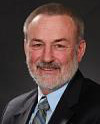 Bruce C. Wheeler, Ph.D. is Professor of Biomedical Engineering, BME Dept., University of Florida and the President of the IEEE Engineering in Medicine and Biology Society. He received the Ph.D. in Electrical Engineering at Cornell University in 1981. Prof. Wheeler’s research interests lie in the application of electrical engineering methodologies to neuroscience. Read more
Bruce C. Wheeler, Ph.D. is Professor of Biomedical Engineering, BME Dept., University of Florida and the President of the IEEE Engineering in Medicine and Biology Society. He received the Ph.D. in Electrical Engineering at Cornell University in 1981. Prof. Wheeler’s research interests lie in the application of electrical engineering methodologies to neuroscience. Read more







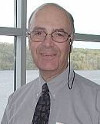 Michael R. Neuman is Professor in the Department of Biomedical Engineering, Michigan Technological University. He received the PhD in electrical engineering in 1966 from Case Institute of Technology and the MD from the Case Western Reserve University School of Medicine in 1974. His research interests are Biomedical sensors and instrumentation, Physiological measurements and perinatal medicine, Clinical applications of biomedical instrumentation, and Microfabrication technology.
Michael R. Neuman is Professor in the Department of Biomedical Engineering, Michigan Technological University. He received the PhD in electrical engineering in 1966 from Case Institute of Technology and the MD from the Case Western Reserve University School of Medicine in 1974. His research interests are Biomedical sensors and instrumentation, Physiological measurements and perinatal medicine, Clinical applications of biomedical instrumentation, and Microfabrication technology. 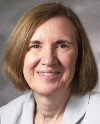 Donna Hudson received her Ph.D. from UCLA School of Engineering and Applied Sciences (1981) and has been on the Faculty of University of California since then. She is currently Director of Academic Research and Technology at University of California, San Francisco, Professor of Clinical and Translational Informatics (UCSF) and Professor, Joint Graduate Group in Bioengineering at UC Berkeley/UCSF. She is an IEEE Fellow and Fellow of the American Institute for Medical and Biological Engineering.
Donna Hudson received her Ph.D. from UCLA School of Engineering and Applied Sciences (1981) and has been on the Faculty of University of California since then. She is currently Director of Academic Research and Technology at University of California, San Francisco, Professor of Clinical and Translational Informatics (UCSF) and Professor, Joint Graduate Group in Bioengineering at UC Berkeley/UCSF. She is an IEEE Fellow and Fellow of the American Institute for Medical and Biological Engineering.  Hsi-Pin Ma is an Associate Professor of Department of Electrical Engineering at National Tsing Hua University, Hsinchu, Taiwan. He received his Ph. D. from National Taiwan University, Taipei, Taiwan. His research interests include communications system design and SoC implementation, power efficient/energy efficient signal processing, and biomedical signal processing and system applications.
Hsi-Pin Ma is an Associate Professor of Department of Electrical Engineering at National Tsing Hua University, Hsinchu, Taiwan. He received his Ph. D. from National Taiwan University, Taipei, Taiwan. His research interests include communications system design and SoC implementation, power efficient/energy efficient signal processing, and biomedical signal processing and system applications. 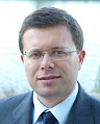 Joel Josè P. C. Rodrigues (S'01, M'06, SM'06) is a professor in the Department of Informatics of the University of Beira Interior, Covilhã, Portugal, and researcher at the Instituto de Telecomunicações, Portugal. He received a PhD degree in informatics engineering from the University of Beira Interior. His main research interests include sensor networks, e-health, e-learning, vehicular delay-tolerant networks, and mobile and ubiquitous computing.
Joel Josè P. C. Rodrigues (S'01, M'06, SM'06) is a professor in the Department of Informatics of the University of Beira Interior, Covilhã, Portugal, and researcher at the Instituto de Telecomunicações, Portugal. He received a PhD degree in informatics engineering from the University of Beira Interior. His main research interests include sensor networks, e-health, e-learning, vehicular delay-tolerant networks, and mobile and ubiquitous computing. 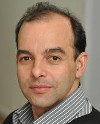 Nazim Agoulmine University of Èvry Val d'Essonne, France is a full professor at the University of Evry, France, and a WCU distinguished visiting professor at POSTECH, Korea. He is leading a research group on networking and multimedia systems (IBISC Laboratory) and is an area editor of International Journal on Computer Networks. He is a coauthor of three books in network architectures and management and a book on autonomic networks. His research interests include wired and wireless network management and control, autonomic networks, and sensor networks. He is a Senior Member of the IEEE.
Nazim Agoulmine University of Èvry Val d'Essonne, France is a full professor at the University of Evry, France, and a WCU distinguished visiting professor at POSTECH, Korea. He is leading a research group on networking and multimedia systems (IBISC Laboratory) and is an area editor of International Journal on Computer Networks. He is a coauthor of three books in network architectures and management and a book on autonomic networks. His research interests include wired and wireless network management and control, autonomic networks, and sensor networks. He is a Senior Member of the IEEE.  Bruce C. Wheeler, Ph.D. is Professor of Biomedical Engineering, BME Dept., University of Florida and the President of the IEEE Engineering in Medicine and Biology Society. He received the Ph.D. in Electrical Engineering at Cornell University in 1981. Prof. Wheeler's research interests lie in the application of electrical engineering methodologies to neuroscience.
Bruce C. Wheeler, Ph.D. is Professor of Biomedical Engineering, BME Dept., University of Florida and the President of the IEEE Engineering in Medicine and Biology Society. He received the Ph.D. in Electrical Engineering at Cornell University in 1981. Prof. Wheeler's research interests lie in the application of electrical engineering methodologies to neuroscience.